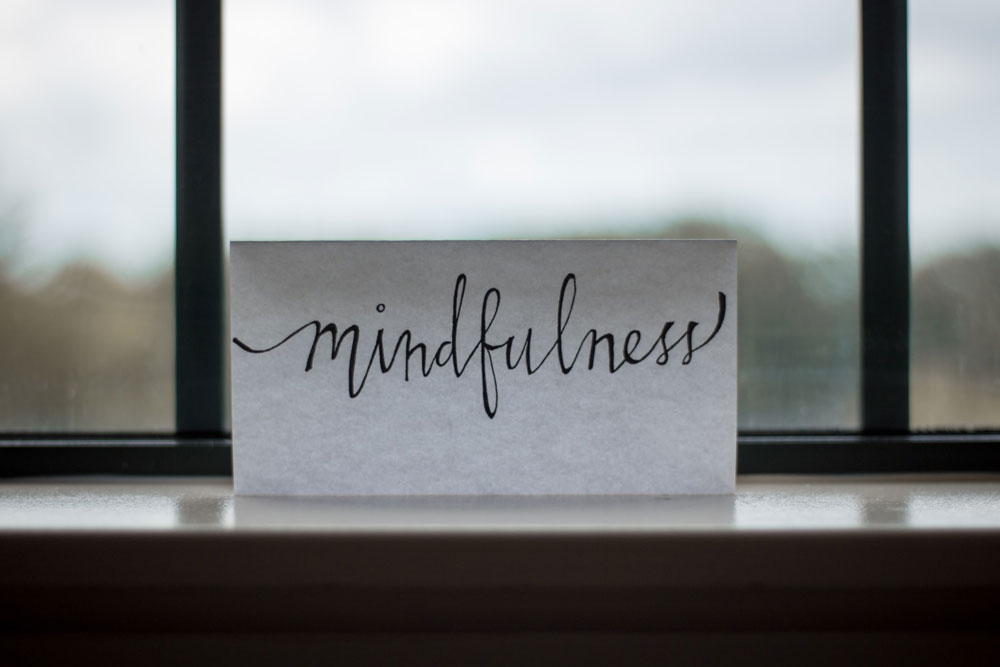How Mindfulness Helps Reactivity
Published on October 13th, 2015
Updated on January 3rd, 2024

Practicing mindfulness has become so a popular form of self-care. This is because mindlessness practices help people cope with different types of life stressors. Life can get overwhelming sometimes, which can cause us to get lost in the moment. Common experiences of losing touch with the here and now include:
- Driving a familiar route and coming to your destination only to think, “I’m here already?”
- Showering and forgetting if you used conditioner in your hair.
- Opening the refrigerator on autopilot with no idea what you intended to pull out.
If not careful, we can spend our time lost in past experiences or anticipating future events. We are forever preoccupied. Mindfulness is applicable in a variety of scenarios. When we are practicing mindfulness we become more aware. With boosted awareness, we become better listeners, drivers, workers, parents, spouses, and friends.
Mindfulness practices help relieve feelings of sadness, anxiety, and worry.
Sponsored by

Choose a therapist to work with and start healing with 20% off from BetterHelp.
Click HereNote: When practicing mindfulness, stay patient. Being judgmental and impatient counteracts openness and awareness.
Mindfulness is the opposite of mindlessness. Mindfulness experts acknowledge the “wisdom of the present.” That is, no future event or memory deserves as much attention as the moment at hand.
Mindful Breathing
A popular mindfulness practice is mindful breathing. Mindful breathing is easy and can help with boosting focus and awareness of the present moment. Follow these steps to practice mindful breathing:
- Sit in a comfortable position with your spine straight and relaxed.
- Breathe in through your nose and out through your mouth (think deep inhales, long exhales).
- Focus on the rising and falling of your chest or belly. You may even place your hand on your heart or your belly to keep yourself focused.
- Begin to tune into your breath.
- Pick a phrase to keep you focused. It may have to do with your body sensations or with quieting your mind.
An exercise like this seems so simple- and it is! It’s just breathing, but also tremendously grounding. It is exercises like that that can help you calm down when faced with stress.
Example: Use deep breathing before an important presentation or conversation, or before you walk into your home after a long, hard day at work.
Body Scan Meditation
There are several variations of a body scan, and for good reason- it is deeply grounding. Practice the following steps to take yourself through a body scan meditation:
- Sit up straight in a comfortable position with your feet on the ground.
- Begin with grounding deep breaths. Set your intention by following your breath for one to two minutes.
- Focus on one of your feet. Then the other. Notice how your feet feel against the ground. Move each of your toes.
- Slowly work your way up each part of your body, by focusing on your ankles, knees, hips, on onward.
- Stay mindful of your thoughts. Do not focus on unhelpful or distracting thoughts.
- Notice the different sensations as you scan your body. Are you hot? Cold? Achy?
- Take advantage of opportunities to relax any part of your body that holds tension.
- Focus last on your face. Relax your face. Relax your jaw and your jaw muscles. Relax your forehead your eyes and your eyebrows. Imagine all of your teeth even relaxing! It is incredible how much tension we hold in our faces.
- Do a quick and final scan of your entire body, if you sense tension that has crept up or tension that has not gone away, say these words “Relax deeper.”
- End your practice shifting your focus to your breath again.

Mindfulness Exercise: Letting Go of Your Thoughts
Letting go of thoughts is intended for folks who struggle with worry and anxiety. Worry lives in “what if” thoughts and active imaginations. This practice reminds us that thoughts are just thoughts! There is nothing truer than the present moment, so let go of the temptation to live in future anxieties. There’s nothing worthwhile there!
- As always, begin with your breath
- Start noticing your thoughts as they enter your mind. What are they?
- Common thoughts often include: “Am I done yet?” “What’s the point of this?” or “This is boring.”
- As these thoughts come into your mind, stay away from judgments like, “Don’t think that!” or “You’re not a good meditator!” or “Gosh, I hope no one sees me.”
- Bring into your focus instead (still breathing deeply in the background, of course!) a quiet, flowing stream. You sit on the riverbank.
- In this quiet, flowing stream is a line of tiny toy sailboats. The kind young girls or boys might play with. They are sailing, one by one down the stream, out of your vision.
- “Send” or “place” each of your thoughts as they come into your consciousness onto one of these boats. Watch each of these thoughts disappear down the stream.
- Notice how all of your thoughts receive the same boat and the same send-off. No thought is “bigger” or “stronger” than others. Additionally, the thoughts are never strong enough to alter the course of the stream. They just float on down.
- Notice the kinds of thoughts you continue to put on the toy boats. They might be thoughts about plans, to-do lists, past hurts, or worries about loved ones. Notice how each thought gets a boat, and they all float away.
- Say to yourself, “Thoughts are just thoughts.”
- Conclude the practice with a minute of deep breathing.
As is the case with most exercises, Mindfulness takes practice. Take your time while exploring mindfulness exercises. If you struggle at times, that’s okay! Keep focus on your intention and allow yourself time and patience as you build your mindfulness skills.
Sponsored by

Find an affordable therapist online with 20% off from BetterHelp.
Click Here






Leave A Reply